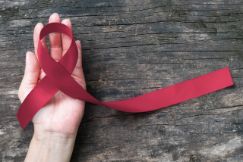
When it comes to oral cancer, there’s good news and bad news. The good news is that treatments have improved and survival rates are up. The bad news is that the number of cases is increasing. As with all cancers, early diagnosis is important for successful treatment outcomes. And the best way to catch this disease early is to get regular oral cancer screenings. Fortunately, that’s as simple as scheduling regular checkups with a dentist! Since April is Oral Cancer Awareness Month, it’s a great time to learn some interesting statistics about oral cancer and find out how easy screenings are. It’s information that could save your life!
Oral Cancer Statistics
- An estimated 53,000 people in the U.S. are newly diagnosed with oral cancer each year (or 132 people each day).
- 1 person will die from it every hour, every day of the year
- With early detection, the survival rate is 85-90%.
- Due to the HPV virus, oral cancer is increasingly being found in young, healthy people who don’t use tobacco
How Often Should You Be Screened and What Is a Screening Like?
The guideline for oral cancer screenings is twice per year. These simple, fast, and non-invasive screenings are automatically done at each of your checkups with a dentist, so it couldn’t be easier.
Since two pairs of eyes are better than one, both a dentist and hygienist will visually examine your lips, cheeks, throat, palate, and under your tongue. They may also gently palpate your neck and under your jaw to see if there are any lumps, bumps, or tender areas.
Self-awareness is always important as well, so be sure to schedule an exam if you notice any of the following symptoms on your own:
- A chronic feeling that something is stuck in your throat.
- Stiffness or pain in the jaw.
- A persistent sore throat.
- A lump or bump that’s developed recently.
- Any sores or lesions that haven’t healed within two weeks.
- Trouble chewing or swallowing.
And, remember, there are many non-cancerous conditions that can look concerning, such as canker sores, cold sores, or benign lumps of fatty tissue. So don’t panic if you notice something, just schedule a visit to be evaluated.
Treatment for oral cancer has come a long way in recent years, but it’s most effective when done early on. With regular checkups, you’ll give yourself the best chance of early detection.
About the Author
Dr. Matthew Nawrocki is a dentist and prosthodontist and a graduate of the University of Florida College of Dentistry. He and his staff take oral cancer screenings very seriously because they know they save lives. They also make it a priority to educate people on oral cancer awareness, including risk factors and the best way to minimize those risks. If you have any questions or you’d like to schedule a checkup, he can be reached through his website.
